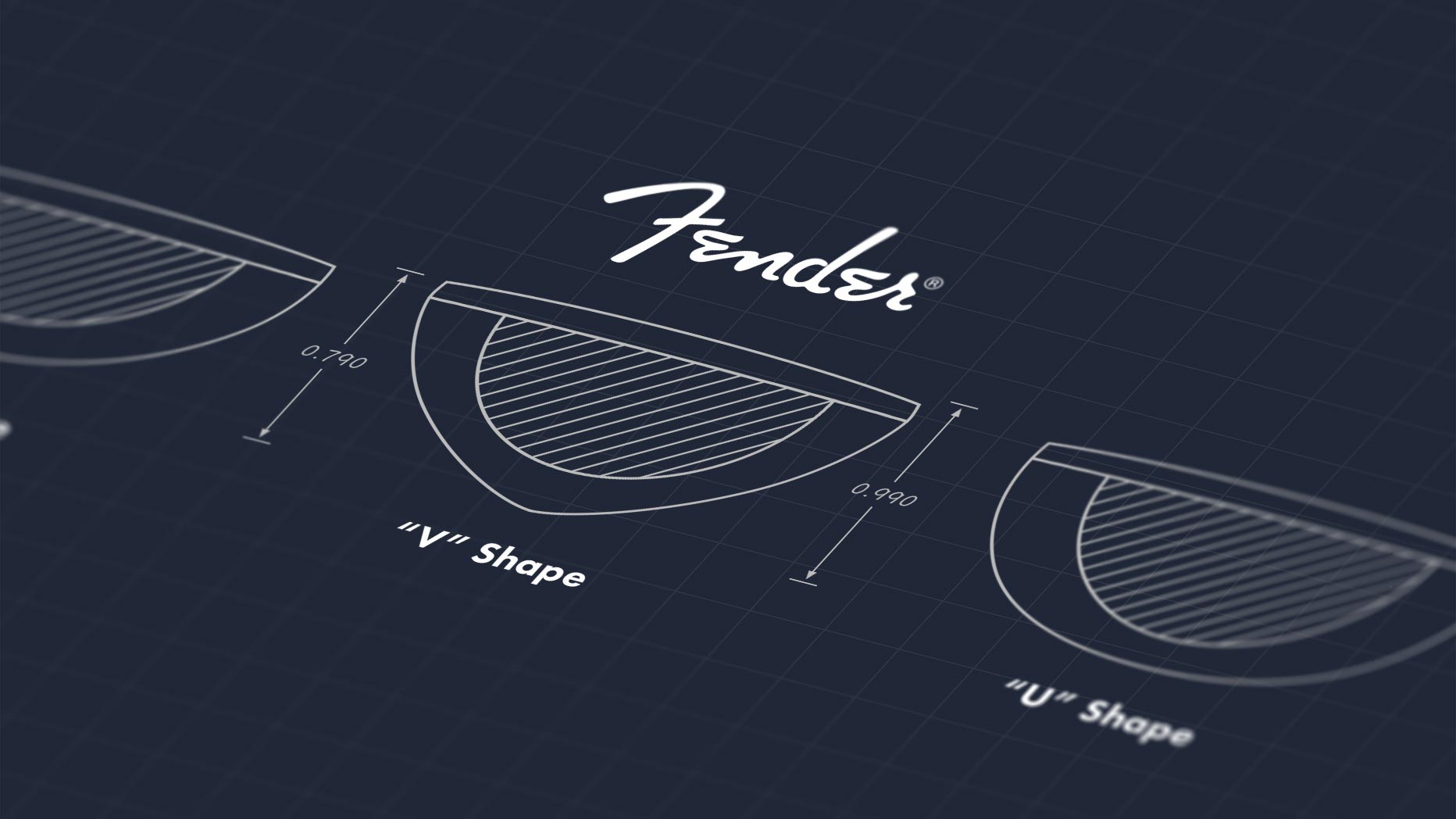
The term “neck profile” refers to the shape of the back of a guitar neck in cross section, and it’s often used interchangeably with the term “back shape.” You can also refer to it simply as “neck shape,” although there are other important neck measurements with which “neck profile” shouldn’t be confused (i.e., neck width, neck depth and fingerboard radius).
So, what does all this mean to the average guitar player who is considering buying a Fender guitar with a description that mentions the instrument’s neck profile?
Before delving into the details, it’s important to understand that neck profile doesn’t affect the sound of the guitar itself; rather, it affects the way you play it.
There isn’t one shape that’s objectively better than another when it comes to soloing, chording, jazz licks, scissor kicks or whatever technique you fancy. It’s purely a matter of personal preference and playing comfort—originally instituted at the request of players who simply had their own individual preferences.
Looking for a beginner guitar? Our interactive gear guide, FindYour.Fender.com, matches you with the perfect model by learning about your sound & style. You’ll be well on your way to finding the right guitar for you.
OK, now the details: Fender uses the letters C, U and V to designate its neck profiles, along with numerous variations of each. The actual shape of these letters roughly corresponds to the shape of the back the neck in cross section, and each may have varying depths—different thicknesses from the front of the neck to the back, resulting in terms such as “thick C shape” and “deep U shape,” etc. Let’s take a look at the three letter types and what each can offer you.

C-Shaped Neck Profile
This is the most common modern neck profile: C-shaped necks have a comfortable oval profile that works well for most playing styles. They are usually not as deep as most U- and V-shaped neck profiles. Many Fender guitars, especially Stratocasters, now have a “modern C shape” (or “flat oval”) neck profile, a flattened variation of the traditional C shape.
V-Shaped Neck Profile
Two versions of this type are popular—a more rounded “soft” V, and a more pointed “hard” V often preferred by players more comfortable with their thumb hanging over the edge of the fingerboard. V-shape necks are part of the old school, and show up on many reissued instruments.
Don’t miss out!
Be the first to know about new products, featured content, exclusive offers and giveaways.
U-Shaped Neck Profile
Chunky and rounded, with high shoulders. Especially deep U-shaped necks, like those found on some Telecaster guitars, are sometimes referred to as “baseball bat” necks. They’re good for players with large hands, and players who are more comfortable with their thumb on the back or side of the neck.
There are also further subdivisions of each type, usually denoted by a design year or era (i.e., ’50s V shape, ’61 C shape, ’70s C shape), in which subtle period-specific variations in one of the basic neck profiles is recreated precisely.
There is occasional confusion about C, U and V neck profile designations and A, B, C and D neck width designations. From the early ’60s to the early ’70s, Fender referred specifically to the nut width of its instrument necks using the letters A (1 ½”), B (1 5/8″), C (1 ¾”) and D (1 7/8″). These letters were stamped on the butt-end of the necks, and have nothing to do with neck profile.


